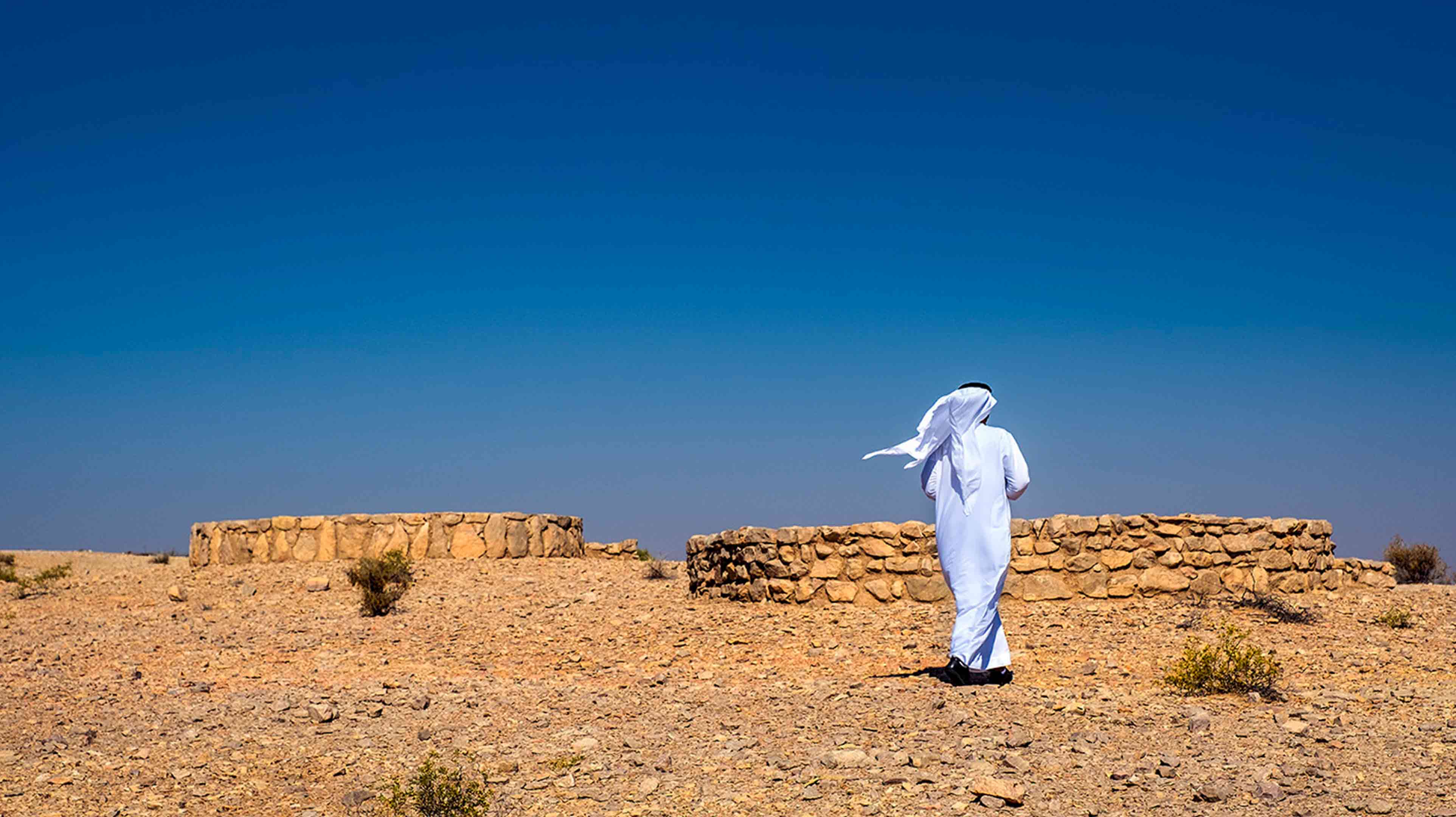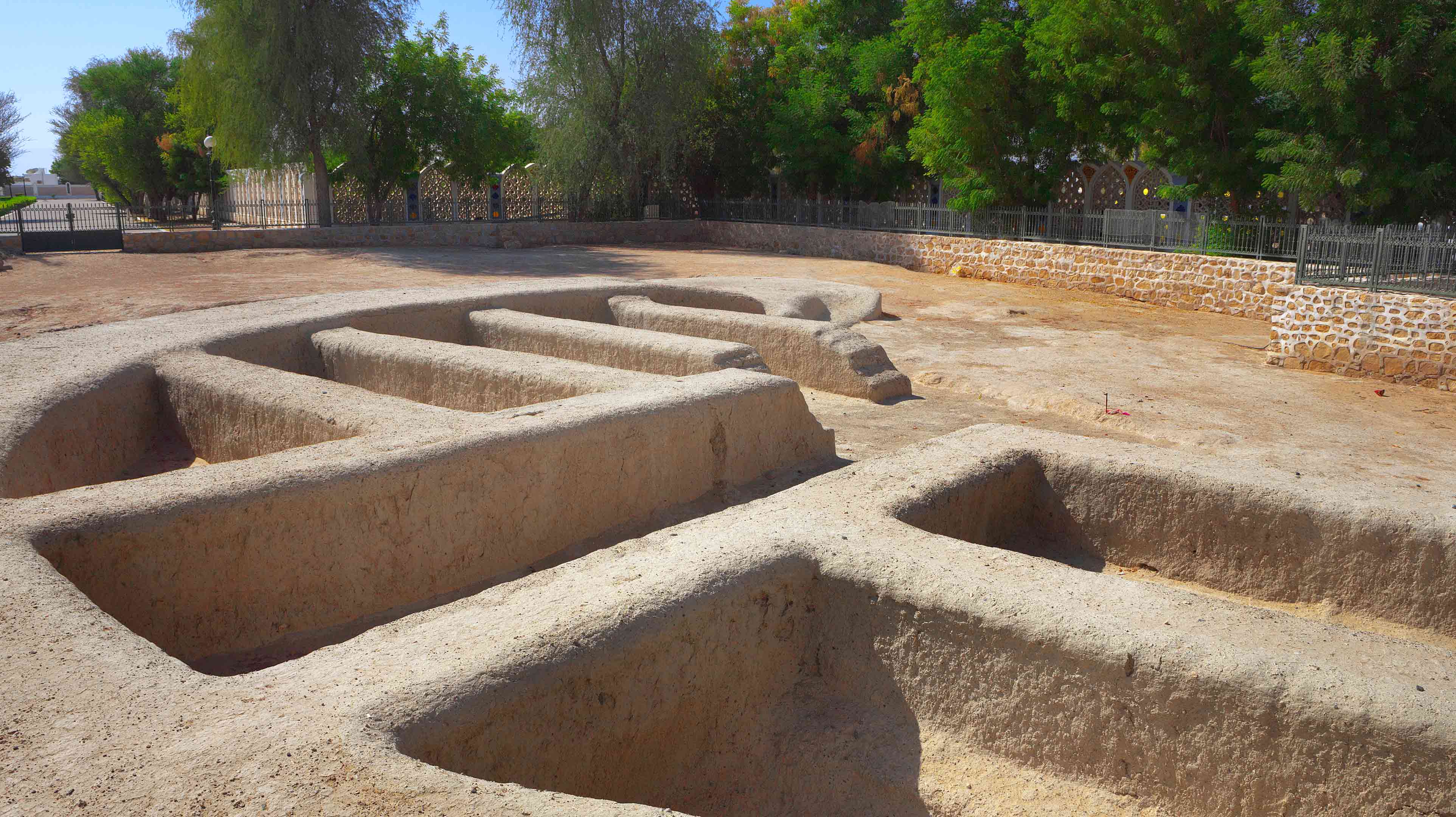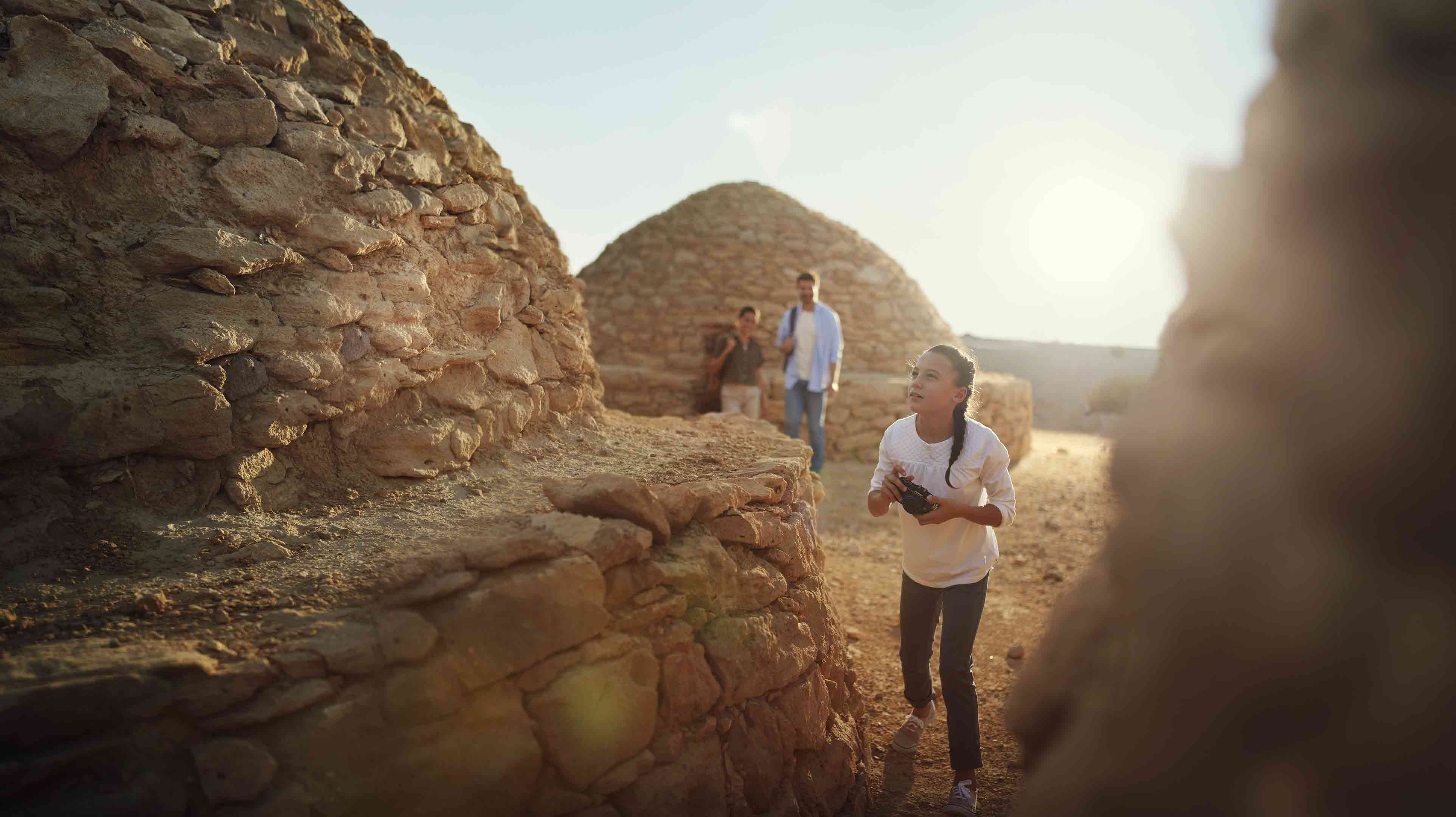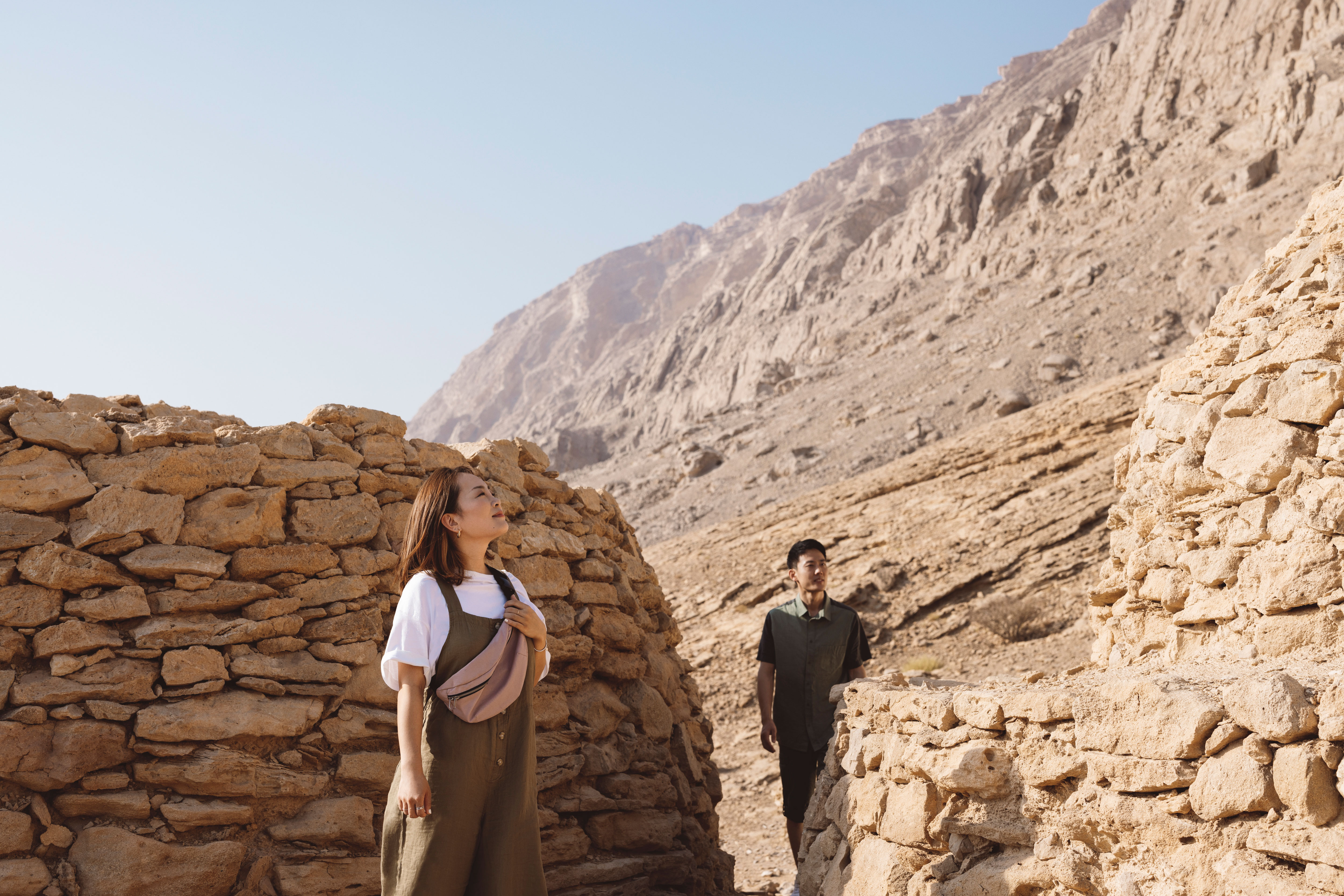Alle anzeigen
UNESCO-Weltkulturerbestätten
Verschiedene Orte, Al Ain
Einst eine lebenswichtige, grüne Oase auf der Karawanenroute von den VAE in den Oman ist die lauschige Gartenstadt Al Ain, was so viel bedeutet wie „die Quelle“, heute eine der weltweit ältesten dauerhaft bewohnten Siedlungen und eine Weltkulturerbestätte der UNESCO.
Von der UNESCO als Kulturstätte eingestuft, umfasst das Welterbe Al Ain sechs Oasen sowie die archäologischen Stätten von Bida bint Saud, Jebel Hafit und Hili. Diese unglaublichen, antiken Stätten spiegeln die Geschichten der prähistorischen Kultur wider. Sie erzählen von menschlicher Besiedlung in diesem Wüstengebiet schon seit der Jungsteinzeit und laden Sie ein, sprichwörtlich eine Reise in die Vergangenheit zu machen.
Bida Bint Saud
Nördlich von Al Ain wurden auf dem Gipfel des Gharn bint Saud, einem großen Sedimentgestein, das sich aus der Wüste und umliegenden Farmen erhebt, zahlreiche antike, aus Stein gebaute Grabstätten entdeckt und ausgegraben. Die größte dieser Grabstätten hat die Form eines Rechtecks, ist acht Meter lang und sechs Meter breit. Obwohl die Entstehung einiger dieser Grabstätten bis zu 5.000 Jahre zurückreichen dürfte, wurden viele von ihnen in der Bronzezeit und Eisenzeit erneut genutzt.

Die Ausgrabungen in diesem Gebiet brachten viele Artefakte zum Vorschein, so auch zweischneidige Schwerter. Rund 1.500 Meter westlich von Gharn bint Saud entdeckte man ein 3.000 Jahre altes „Faladsch“, ein altes Bewässerungssystem. Dieses unglaubliche technische Meisterwerk zeugt vom hiesigen Einfallsreichtum, der es ermöglichte, an tief unter der Erdoberfläche vorhandenes Wasser zu gelangen. Derzeit liefert dieses „Faladsch“, ebenso wie andere Beispiele aus dem Hili Archaeological Park und anderen Orten in den VAE und dem Oman, die ersten Beweise für die weitverbreitete Verwendung dieser Bewässerungstechnologie auf der ganzen Welt. Auch ein großes Lehmziegelhaus, zu dem ein zentrales Zimmer mit Säulenfüßen gehört, wurde nahe des „Faladsch“ entdeckt. Erbaut wurde dieses Haus vor 3.000 Jahren. Diese historischen Stätten veranschaulichen die entscheidende Rolle, die das Gebiet Bida bint Saud, und Al Ain im Allgemeinen, in der Entwicklung der östlichen Region Abu Dhabis spielten.
Hili Archaeological Park
Die archäologische Stätte Hili Archaelogical Park liefert nicht nur einen der ersten bekannten Anhaltspunkte für ein landwirtschaftlich betriebenes Dorf in den VAE. Hier finden sich noch weitere Dörfer aus dem Bronzezeitalter (3.200 v. Chr. bis 1.300 v. Chr.) und der Eisenzeit (1.300 v. Chr. bis 300 v. Chr.) sowie Friedhöfe und landwirtschaftliche Infrastruktur. Das frühzeitliche landwirtschaftlich betriebene Dorf befindet sich an der Ausgrabungsstätte Nr. 8 und wurde vermutlich 3.000 v. Chr. errichtet. In der Zeit zwischen 2.500 v. Chr. und 2.000 v. Chr. ließen sich weitere Menschen in Hili nieder.

Dieser geschichtliche Zeitraum erhielt den Namen Umm-an-Nar-Epoche, denn die Überbleibsel dieser Kultur wurden zuerst auf der Abu Dhabi vorgelagerten Insel Umm an-Nar gefunden. Bezieht man die gesamten VAE mit ein, findet sich in Hili die größte Ansammlung von Grabstätten und Gebäuden aus dieser Epoche. Viele der Gebäude aus der Bronzezeit im Hili Archaeological Park sind für Besucher geöffnet. Hili liegt in der Nähe des Fossil Valley, einem Gebiet mit einer reichen Vielfalt an Fossilien, deren Ursprung viele Tausend Jahre in eine Zeit zurückreicht, in der das Fossil Valley noch vom Wasser bedeckt war.
Die Grabstätten von Jebel Hafit
Die 5.000 Jahre alten Grabstätten von Jebel Hafit markieren den Beginn des Bronzezeitalters in den VAE. Bei Ausgrabungen von dänischen Archäologen im Jahr 1959 fand man in den Grabstätten Anhaltspunkte für Keramikgefäße und Artefakte aus Kupfer. Diese verdeutlichen die Tragweite des Seehandels auf dem Arabischen Golf. Die Grabstätten sind Einkammergräber und aus hiesigen unbearbeiteten oder grob bearbeiteten Steinen erbaut. Sie unterscheiden sich von den oben angesprochenen später entstandenen Umm an-Nar Grabstätten. Diese wurden aus fein bearbeiteten Blöcken hergestellt und enthielten die sterblichen Überreste von Hunderten von Menschen.

